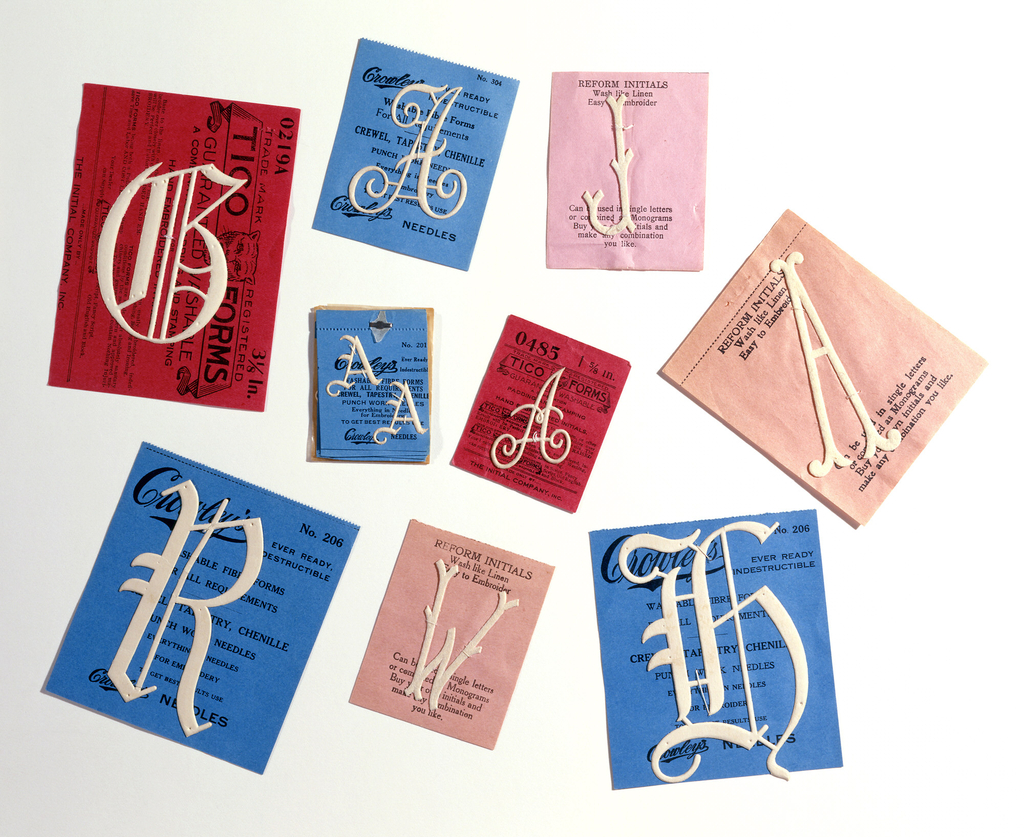From the seventeenth through the nineteenth centuries, pattern books were published detailing alphabet and numeral forms, and monograms (“ciphers”). Penmanship manuals taught proper writing skills through the repeated copying of the alphabet, the primary building blocks of a child’s education. Writing manuals contained instructions on preparing writing materials and implements, how to hold the hand and body when writing, and the proper execution of letter forms. Most writing manuals also included a practical section, with a series of model letter forms and strokes intended to be copied by the student.
Writing manuals provide a record of the evolution of writing styles, which were effected by the increased need for a rapid business cursive, expanding literacy and public education, changes in women’s education, and technical advances such as the replacement of the quill by the steel pen.
The numbers, letters, and monograms taught and illustrated in manuals and pattern books were used by a wide variety of craftsmen, including engravers, wood carvers, painters, and embroiderers—as seen in samplers and in other forms of domestic embroidery. In the seventeenth through the twentieth centuries, monograms, numbers, and letters were often embroidered in the corners of household linens to identify the owner and maintain a record of the household inventory. A twentieth-century example shows an intermediate step between hand and machine embroidery: felt embroidery forms of the alphabet, such as those distributed through Crowley’s Department store in Detroit, were used as a raised guide, to be covered with embroidered stitches for the embellishment of household linens.
